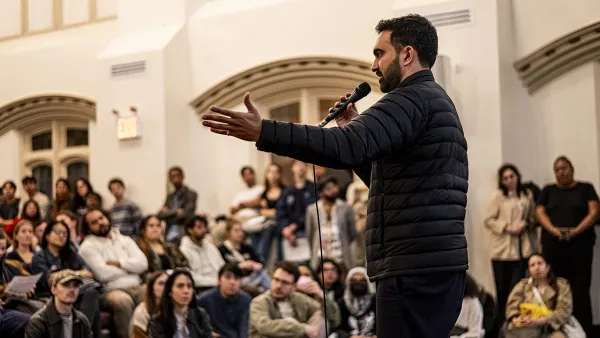A new report calls into question who's benefiting from the Bloomberg administration’s plan to build or preserve 165,000 affordable housing units in the city. Are federal guidelines to blame for 'affordable' units being too costly?
In a city known for its exorbitant rents and increasing income inequality, one of the largest affordable housing initiatives in the country should be doing more to serve the city's poorest residents, argue housing advocates. So why isn't it?
Winnie Hu discusses the findings of a report released last week by the Association for Neighborhood and Housing Development, "that found about two-thirds of the city’s recently developed affordable housing required occupants to have minimum income levels that were higher than the median household income in the areas where the housing was built."
"The notion of affordable housing that is too expensive may seem counterintuitive, but city housing officials say their efforts have focused, in particular, on an underserved population of New Yorkers who struggle to make ends meet but earn too much to qualify for public housing and other government assistance," writes Hu. "That has helped a broad section of the city’s workers survive in a rental market that is among the most expensive in the nation."
"But many housing advocates and community leaders say that the city’s efforts have failed to help many of the poorest residents, who face long waiting lists for public housing and a shrinking pool of other options. They also say that the plan has failed to stabilize neighborhoods like Highbridge, where residents are being priced out by rising rents."
FULL STORY: Some ‘Affordable’ Units Too Costly, Report Says

Planetizen Federal Action Tracker
A weekly monitor of how Trump’s orders and actions are impacting planners and planning in America.

Chicago’s Ghost Rails
Just beneath the surface of the modern city lie the remnants of its expansive early 20th-century streetcar system.

San Antonio and Austin are Fusing Into one Massive Megaregion
The region spanning the two central Texas cities is growing fast, posing challenges for local infrastructure and water supplies.

Since Zion's Shuttles Went Electric “The Smog is Gone”
Visitors to Zion National Park can enjoy the canyon via the nation’s first fully electric park shuttle system.

Trump Distributing DOT Safety Funds at 1/10 Rate of Biden
Funds for Safe Streets and other transportation safety and equity programs are being held up by administrative reviews and conflicts with the Trump administration’s priorities.

German Cities Subsidize Taxis for Women Amid Wave of Violence
Free or low-cost taxi rides can help women navigate cities more safely, but critics say the programs don't address the root causes of violence against women.
Urban Design for Planners 1: Software Tools
This six-course series explores essential urban design concepts using open source software and equips planners with the tools they need to participate fully in the urban design process.
Planning for Universal Design
Learn the tools for implementing Universal Design in planning regulations.
planning NEXT
Appalachian Highlands Housing Partners
Mpact (founded as Rail~Volution)
City of Camden Redevelopment Agency
City of Astoria
City of Portland
City of Laramie





























